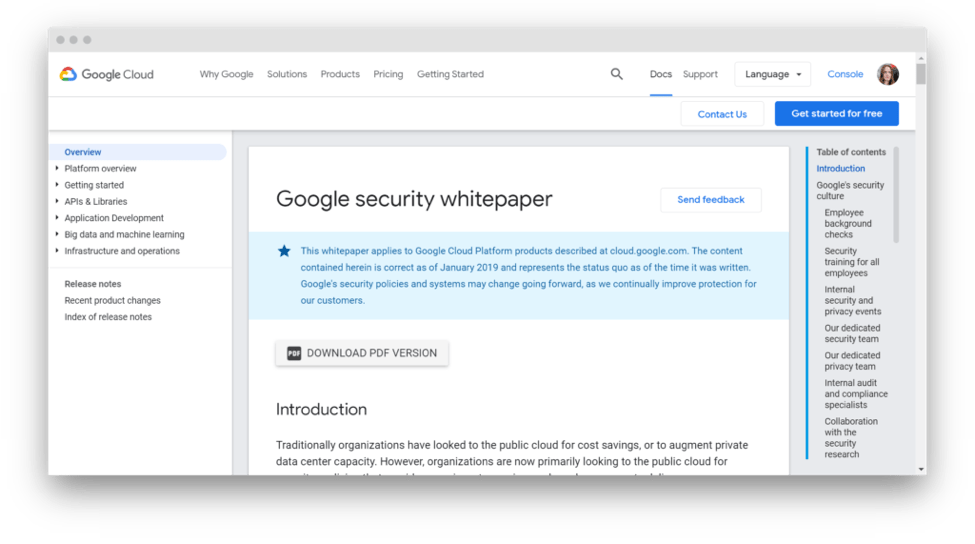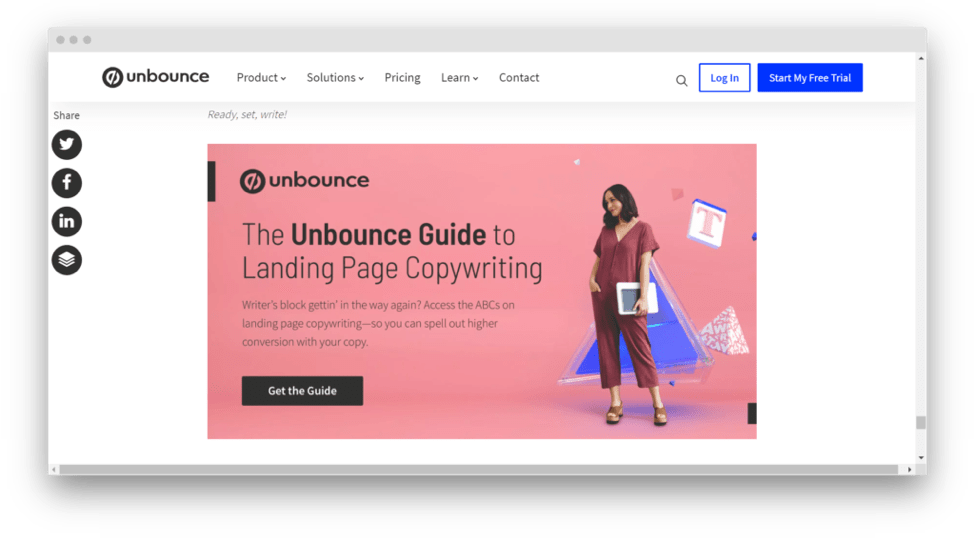White papers are a phenomenal way to generate leads — in fact, 80% of users are willing to leave their email in exchange for a white paper. I wouldn’t blame you for wanting to get in on the action. But if you’re new to writing white papers, it can be difficult to figure out where to start.
To help you out, we’ve compiled a crash course on white papers: read on to learn about data collection, formatting, white paper writing tips, promotion, and much more! At Contenteam, we’ve been creating effective white papers in English, Spanish, German, and other languages for over seven years, so we have a lot of strategies in our arsenal.
Table of Contents
What Is White Paper Writing, and Why Is It Needed?
Before we dive into the logistics of creating a white paper, let’s examine what it is and how it can benefit your business. Who writes white papers? Well, the term “white paper” was actually derived from when government papers were color-coded; white-colored papers indicated that the text was for public access.
Nowadays, though, white papers are detailed reports that inform readers on complex challenges and present solutions. Companies create white papers as part of their content strategies. This format of content allows them to showcase their expertise in a topic, build user trust, generate leads, and expand reach.
White papers are used at different stages of the sales funnel, but more often before making a deal. The document helps a wide audience understand a topic and develop trust in the sponsor. By presenting factual evidence in an educational context, the company can position itself as an authority in its industry.
There are three main formats of white papers:
These white papers detail the benefits of a product, service, or approach.
“The problem is the solution.” This kind of document provides readers with a solution to a common problem.
Such a white paper collects useful statistics and data on the state of the industry.
And, of course, a great white paper can also contain elements of all three formats. Whichever format you choose, when writing a white paper, you should stick to these principles:
- The document should be based on facts and figures rather than the author’s personal opinion.
- The text should be highly detailed; it could range from 5 to 100+ pages.
- The material should be written in a formal business style.
What's the Difference Between a White Paper and an E-book?
A corporate white paper isn’t the same as an e-book or a longread, even if they end up being similar in length. Check out the table below to see the differences at a glance.
White paper | e-Book | Longread |
The text is usually long and continuous, with few breakdowns | The text is divided into easy-to-read blocks | The text is split into small blocks that are easy to scan |
Is based on data, research, and facts | Ideas and trends are based on principles | Is based on one narrow theme |
Text dominates | Text is diluted with visuals and graphics | Text is diluted with visuals, examples, and videos |
Formal business style and expert tone | Informative style, dialogue with the reader | Informative or even conversational style, dialogue with the reader |
A white paper is the most official, expert format out of the three. Objective data and analytics come first, and there is much less adaptation for the reader.
Killer White Paper Examples
Let’s take a look at the most prominent whipe paper exmples from the market leaders.
Google Cloud Platform
Google content is a classic example of a white paper review: an online format with a PDF download, section navigation, and solid text. They have plenty of software engineering white paper examples for your perusal.

Hyperledger
The blockchain company Hyperledger has prepared useful material on industry terms and metrics in PDF format. Diagrams and tables have been added here, which makes it easier to understand.

Cisco
Cisco proves that a white paper essay doesn’t have to be boring. Smart design, infographics, and callouts make reading this text comfortable.

Zendesk
Here’s a great example of a white paper in a report format with an engaging performance. It uses animation, graphic elements, intuitive navigation, and interactive elements.

How to Prepare a TOR for a White Paper
When preparing terms of reference for a white paper, make sure to consider the following elements:
- The first question you need to answer is why your business needs a white paper. What goals will it help you achieve? Do you want to generate leads? Increase your sales? Position yourself as an expert?
- Determine in which areas you’re an expert and in which areas you have enough data to write about. Then, from the resulting list, choose the topic that is most interesting to your target audience. Analyze the most frequent search queries and check out reactions to similar white paper content. Try to focus on topics that haven’t been extensively covered by competitors.
- Reader persona. Determine at which stage of the funnel you will offer the white paper to users. Will they be familiar with the topic already? Do they understand the terms? What problems do they want to solve?
- Determine which subtopics should be considered by the author, and choose an order (we’ll cover this in detail later).
- Compile expert information, internal data, and links to sources.
- Choose which graphic elements you’d like to see in the white paper. If you want a professional design, it’s better to create a separate TOR for a specialist.
- Promotion channels. If the white paper will be published as an advertisement or on a landing page, you’ll need to link the paper’s introduction with the campaign’s promises. If the emphasis is on organic promotion, make sure to prescribe SEO tasks in the white paper proposal.

How to Collect Data
White papers are data-focused; you can’t just throw statements out willy-nilly without backing them up. You’ll need to conduct significant research in order to put together an authoritative white paper – and the quality of your sources matters.
If you want to create a valuable document, you need to gather your research materials from reliable sources – and, no, blog posts that compile statistics don’t count. I can’t tell you how many times I clicked through a link to a study and found out that the blogger totally misrepresented the context.
With so much fluff on the Internet, where do you find the good stuff? Well, you have two options:
1. Your Own Research
If you have the resources for it, you can conduct your own research: this includes interviewing site visitors and customers, working with focus groups, and conducting experiments. Then, you can incorporate instructions, test results, and diagrams into your academic white paper.
This option is very successful, as it offers readers unique data. It strengthens your status as an expert and paves the way for industry networking opportunities. What’s more, the process of researching gives you incredible insights into your audience and industry.
Yet, you might not have the ability to conduct research on every topic you’d like to write about. So, in that case, you’d move on to the next option.
2. Authoritative Sources
Just about every industry contains a research firm that publishes industry trends, statistics, and valuable information — all things that add up to a spectacular white paper. For instance, Gartner is one of the most well-known and reputable research firms. If you reference them in your work, nobody’s going to give the claim side-eye.
Here’s an easy way to tell if a source is trustworthy: domain authority. Moz offers a free online site authority checker; all you have to do is enter the domain and get the result. The higher the domain authority and the lower the spam score, the safer it is to use the resource.

Some authoritative sources we work with include:
Tips for Data Collection
- Check out the white papers published by your competitors, as well as those published by trade associations and governments. By reviewing these materials, you can determine which topics have already been covered many times. You’ll want to bring something new to the table — or at least a topic that hasn’t been discussed to death.
- We recommend getting familiar with your industry’s trade associations. They publish newsletters, reports, and other publications that present facts, news, and trends in a straightforward manner. What’s more, they also host webinars, conferences, and other events, which are great ways for you to access original research carried out by association members. Want a pro tip? Sometimes these trade associations post PowerPoint presentations and workshop handouts on their websites. So, you can get insights without flying out to a conference!
- When collecting data, you’ll need a place to organize your findings. Microsoft Word is the obvious solution, but I also really like working with Evernote. Break your research up into chunks (or themes), and give each chunk a heading. You aren’t creating a white paper outline at this point; it’s just an easy way for you to keep your statistics straight. As you find facts and research that are applicable to your white paper, just paste them under the relevant heading.
- Decide in advance how you will format your citations. Typically, a list of sources is placed at the end of the white paper. We recommend using this free Citation Generator; you can choose the style (APA, MLA, etc.), and the tool will do the rest of the work. You’ll just need to copy and paste the result into your white paper.
How to Write a White Paper
Let’s dive into step-by-step White Paper creating process.
Creating an Outline
First things first, you’ll need to make an outline. Attempting to write a white paper without a plan is a big no-no; winging it will lead to a messy document, inconsistencies, and just plain inefficient writing.
There are tons of ways to create an outline, but here’s one of my favorites. First, open up a blank Word document, and write your white paper’s key message at the top. What I mean by this: pinpoint what you want your reader to understand, believe, or do after reading the document. For instance: “I want the white paper to educate readers in ABC and position our company as an authority in the XYZ industry.”
This key message prevents you from drifting — everything you write should align with your key message.
Next, list all the major points you want to address in the white paper; don’t worry about organizing them just yet. I like asking myself the five W’s and H – Who am I writing to? When is the data from? Where is this information applicable? Why is this information important to the reader? What is the problem? How is it being addressed?
As you ask yourself questions, new questions will inevitably pop up. Let yourself go down the rabbit hole — just make sure that what you write down aligns with your key message.
After brainstorming your heart out, arrange your thoughts in the order that you want to write them. Review the whole thing, and repeat the process as many times as necessary — until the outline reflects what you want to write about and the order in which you want to write it.
How the pros do it: At Contenteam, we interview the company on a call and create an extended outline based on product research. We get the client's full approval on the outline before passing it on to the white paper writer; this makes the process much more efficient and ensures that the end product aligns with the client's key message.
Choosing a Title
Just as every book has a title, a white paper must have one too. A great title tells your target audience who the paper is for, what it’s about, and why they should read it. So, if you actually want people to download your white paper, you can’t rush this step.
White papers are often long documents that are a slog to get through — so if your white paper is on the brief side compared to your competitors, spin that to your advantage. Use the title to hint that the paper is a quick, condensed read: “Six Things You Need to Know About ABC.”
Another idea is to address the audience type; for instance, “The Sales Manager’s Guide to Upcoming CRM Trends.”
Now, a completely different (yet still effective) approach would be to put your keyword at the front of the title, and add a catchier subtitle after it. Case in point — bWhen you’ve thought of a few options, run the titles through a headline tool like Sharethrough. It’ll give you a good sense of how engaging your title is.
Crafting an Introduction
The first page in any document is the most important: it might not contain the most valuable information, per se, but it needs to grab the reader’s attention, introduce the problem/question/challenge, and explain what your white paper brings to the table. Let’s take a brief look at each element.
So, first, you want to captivate your target audience and compel them to keep reading. To do this, keep your first sentence pretty short. Give a startling statistic, give a piece of advice, make an odd observation — it’s up to you. Just please, please, PLEASE, do not mention the name of your company or the title of the white paper in the first introductory sentence.
After you’ve grabbed your reader’s attention with a cool statement, it’s time to name the challenge that led to them reading the white paper. Perhaps they want to understand a technology, solve a problem, or make a decision … this is where your key message comes in handy! What is happening in the market today that involves the reader? What are companies struggling with?
State the problem clearly — and then conclude the introduction by saying how the paper will answer their questions. It can be great to include a bullet list here (don’t shy away from using lists in an introduction; anything that makes papers easier for consumers to digest is perfectly fine).
Providing an Overview
Before you dive into the meat of the whitepaper content, you need to give the reader some context. Unless every reader is working with a common set of facts and assumptions, the paper will be hard to understand. So, to give them all the context they need, you’ll provide an overview. It doesn’t have to be too long — half a page will work.
In the overview, you’ll define the key terms that will be considered in the material and set the variables. I also recommend taking a paragraph to describe the industry’s current state of affairs and present a brief history of the issue. At the end of the overview, use a couple of sentences to indicate what the reader will learn about next.
Tackling the Body
Work section by section to fill out your white paper. This is where your outline comes in handy! You’ve already broken your white paper up into different sections, and your research was organized into chunks as well. All you have to do is connect the dots! Here are some tips to keep in mind when writing the body of the text:
- The best white papers provide unbiased, educational information. Don’t try to sell something to your readers or push your brand — leave that for the CTA at the end (which we will address in a moment).
- Even though a white paper is data-heavy and technical, it doesn’t have to be dry. Use active language and incorporate real-life examples when possible.
- Keep going back to your key message! Make sure that every paragraph points back to your key purpose: if something is irrelevant, delete it.
- If you think readers need additional context that doesn’t fit within your white paper, provide a list of external resources — books, courses, videos, etc.
Give a Conclusion
Consider the key findings from different sections of the white paper. This is where you’ll add a CTA and push your service/company — after all, in most cases, the purpose of a white paper is to generate leads. Yes, you want your text to position your company as an expert in the field, but if it doesn’t generate any leads, what’s the point?
But, since white papers need to be unbiased, it can be hard to strike a balance between text that is impartial yet lead-generating. It really comes down to your CTA: you have a page or so to explain your solution, show how it solves the reader’s problem, and give some information about your business.
So, how do you present the conclusion? Open up by summarizing the white paper, and then restate the problem statement & solution. Provide a summary of your recommendations, and then transition into a description of your company and its services. Make sure to tie your services into the problem statement: very clearly spell out how you can help address the challenge.
Lastly, you need to tell the reader what the next step is and how they can take it. Do they need to fill out a form? Sign up for a free demo? Call you for a consultation? Give them any necessary information.
List the References
Provide a list of the resources you used in the material. Make sure all citations are done in the same style and that you include the DOI for online journal articles.
Errors to Avoid
Some common errors to avoid when writing a whitepaper include:
Focusing on sales. A white paper is primarily intended to reinforce your status as an expert. If it’s full of sales tactics, readers won’t glean much value — and it’ll leave a bad taste in their mouths.
Little data. All conclusions in a white paper should be based on data. If you’re writing content based on opinions and general recommendations, it’s better to format it as an e-book.
Abstract information. In order for your material to be read and shared, you need to tie facts to the specific problems they solve.
Dry writing. A white paper is professional content with strict boundaries — however, you should still follow the general principles of storytelling. Organize your material in such a way as to guide the reader from simple to complex and offer the promised reward at the end. Without this, it will be difficult to retain the reader’s attention.
Formatting and Design Tips
Now that the text is ready, it’s time to style it. You can use a regular text editor or an online builder — the latter comes with all sorts of cool templates, but you might need to pay a monthly subscription to access the service. If you want a truly professional design, though, we recommend working with an in-house specialist or freelance designer.
When formatting the white paper, keep these points in mind:
- Break up your text with interesting visuals, such as charts and graphs. Highlighting blocks and building a hierarchy of elements and visuals will make the white paper easier to scan and read.
- Elements should have a consistent design. Determine what the different elements will look like beforehand: headings, subheadings, lists, quotes, captions, etc.
- How does the white paper look on mobile devices? More than 50% of Internet traffic today comes from mobile devices. If you don’t want to lose half of your audience, adapt the white paper for small screens.
- The white paper’s design should reflect your brand’s corporate style — for instance, the same fonts, color palette, and recognizable elements should be used throughout the text.
- Don’t ignore trends! While fashion might not be as important as the other elements on this list, paying attention to design trends is worth it.
For inspiration on white paper design, I recommend checking out Paperflite.

How to Promote a White Paper
Your white paper is ready! It’s well-written and organized, and the formatting is beautiful. You’ve checked and double-checked citations, and the proofreader has cleaned up any grammatical errors. But … now what? How do you get this beautiful craftmanship in front of your target audience? There are a few powerful approaches I’d like to suggest:
Collecting Leads
More often than not, companies create detailed, expert content to collect the contact information of potential customers.

To promote a white paper for this purpose, you’ll need to prepare separate landing pages with download forms. In order to get the material, the user needs to provide contact details and information about their company. Here’s an example from Oracle:

For this approach to work, it’s important to add the following elements to your landing page:
- Describe the user’s goal. What will they get by downloading the book? For example, will they learn how to snag their ideal clients?
- Provide a problem statement. What challenges are your future readers facing? For instance, perhaps CMOs want to keep their ROI while innovating but are having difficulty doing so.
- Propose a solution. How does the white paper help them solve the challenge? Perhaps it provides a data-driven approach that can help pool marketing resources and personalize customer experiences.
- Give a call to action. It can be pretty simple, like “Download Now.”
Pro Tip: To increase conversion, provide a material preview or add automatic import of data from social networks.
Website Ad Blocks
Do you already have a loyal audience that visits your site for industry insights? Invite them to read your white paper! To do this, you can:
- Add ad units to pages and blog posts.
- Set up a pop-up window for when they are on the site for a long time or if they try to leave the page.
- Include a call-to-action in push notifications or via chatbot.
- Mention the white paper in other publications.

External Promotion
When drawing attention to a white paper, you shouldn’t limit yourself to your own website. There are many other ways to draw in high-quality traffic:
- Social networks. Here, you can capture your audience’s attention with a couple of shocking facts. Then, tell them they can download the white paper to find out more.
- Send out an email notification about the material to your own base.
- Shoot a video with a brief overview of the white paper, and add a download link in the description.
- Share information about your work in groups and communities on similar topics.
- Add a link to well-crafted guest posts.
- Opinion leaders. Ask experts to tweet about your white paper or mention it in their own publications.
Summed Up
A white paper is an effective tool for generating leads and strengthening your status as an expert in the industry. To get the most business value out of this content, follow these guidelines:
- Study the needs of your target audience, and use them to drive your topic and content.
- Collect data — the more, the better. Do your own research or use trusted sources.
- Write the text or order it from professionals (more on that later). Don’t forget to add a title, introduction, overview, subheadings, conclusion, and list of sources.
- Prepare the white paper for promotion. Create a landing page for collecting leads, advertise materials on your platform, and spread the word on external sites.
Trust Your White Paper to the Experts!
At Contenteam, we live and breathe high-quality content. Our team is well-versed in producing white papers that boost clients’ authority, are filled with data from high-quality sources, and are supplemented with beautiful graphics and useful charts.
We can handle white papers on any topic, including highly technical ones. And no matter what length you need, our white paper writers are on the job: from smaller papers with 6-8 pages, all the way to 70+ page beasts, we’ve done it all!
Save yourself hours upon hours of writing, and leave the job to the experts. Here’s how we carry out white paper writing services:
First, we’ll have a call. Together, we’ll determine an outline, and you can provide us with any original research. If you want us to do all the research ourselves, that won’t be a problem. We have access to the best research databases.
Next, the white paper will be assigned to a white paper copywriter who has subject knowledge of your industry (for example, if it’s a text on cloud technology, an IT writer will handle the text; PR experts will write public relations white papers, etc.).
After the paper writer has finished, the text will move on to a fact-checker. After all, white papers are data-driven, so every statistic needs to be correct.
Next, an editor will make sure that the white paper meets your specifications in full: from style and tone to contents.
Lastly, a proofreader will scour the white paper carefully for any spelling or grammar mistakes.
Once the white paper has passed this multi-step approval process and is perfect, we’ll send it to you. And that’s it — with little work on your end, you’ll receive expertly written content that cements your position in the industry.
We offer the best white paper solutions for numerous niches, including:
IT white papers
Crypto white papers
Retail white papers
Healthcare white papers
Fintech white papers
White papers for corporate investors
If you want to learn more about ordering our white paper service, fill out our contact form. I’d be happy to have a white paper consulting session with you!
White Paper Writers Wanted
![]() Are you a technical writer looking for work? Contenteam is expanding, and we're adding specialist writers to our team. If you think you have the chops for white paper copywriting, fill out the contact form!
Are you a technical writer looking for work? Contenteam is expanding, and we're adding specialist writers to our team. If you think you have the chops for white paper copywriting, fill out the contact form!
FAQ
Why are interviews important when writing a white paper?
Interviews can provide readers with new information that isn’t widely known. An interview contains the perspective of one person rather than general industry insights. Thus, interviews can bring all sorts of fresh ideas to the table.
What does a white paper look like?
A white paper usually opens up with a title page, which contains the company’s logo, a headline, the date of publication, and a 1-sentence summary. The second page has a table of contents, and the following pages have the actual text. The final page will contain references and, sometimes, a blurb about the company.
How to write a technical white paper?
Here is a pretty basic summary of what a technical white paper does: you’ll address the problem that readers are facing. Then, you’ll introduce the technical product that solves that problem. First, explain how the product works in general. Then, move on to how the product fixes the challenge and why it’s the best solution. If you don’t want to write the technical white paper yourself, consider using white paper services from Contenteam. Order a technical white paper, and you’ll receive well-organized, on-brand content that’s backed up by the latest data.
How long should a white paper be?
It really depends on how much useful information you have. Don’t be tempted to pad out a whitepaper with filler content; if it can fit in 6-8 pages, that’s great. After all, your target audience might not have lots of time to examine huge documents. However, if you are contributing original research, the white paper can be as long as necessary; I’ve read some that are 50+ pages!












